A centuries-old institution, the Monnaie de Paris mints not only French coins, but also those of many other countries, which recognize its expertise! Founded in 864, one of the world’s oldest companies has nevertheless aged well: today, it continues to reinvent itself, minting new collections every year, as well as offering a rich cultural program. Here’s a look back at its history.
Article produced in collaboration with the Monnaie de Paris
Summary
The history of La Monnaie de Paris
Minting coins for the State
Today, minting is highly regulated, but that wasn’t always the case! For a long time, lords, barons and ecclesiastics in every province minted their own coins.
In 864, with the Edict of Pîtres, King Charles the Bald listed ten workshops authorized to mint coins for the Kingdom, including the Paris workshop. The manufacture and issue of coins thus became a regalian power, but remained disparate throughout the kingdom. It wasn’t until the end of the 17th century, under Louis XIV, that the same coins were minted throughout the country.
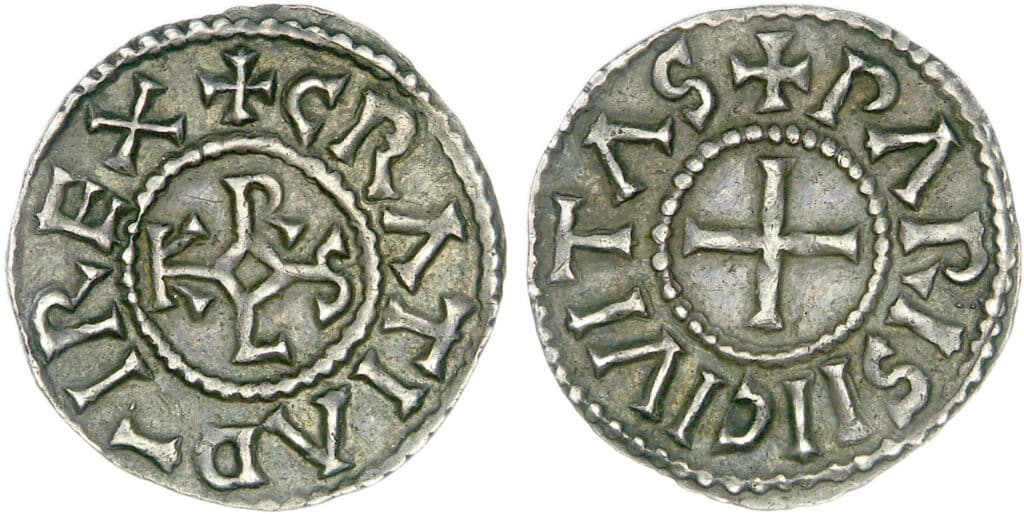
The installation at the Hôtel de la Monnaie
As production rates increased, the workshops of the Monnaie de Paris moved several times, from the Palais Royal to rue de la Vieille-Monnaie (now boulevard Sébastopol) and then to rue de la Monnaie (next to the Samaritaine), thus marking Parisian streets with its name!
The Monnaie de Paris remained on rue de la Monnaie for four centuries before moving to its present location in the 18th century. At the request of Louis XV, the Hôtel de la Monnaie was built on the Quai de Conti to house the famous monetary institution – one of the biggest construction projects of the era! Its architect, Jacques-Denis Antoine, turned it into both a royal building and a factory, with ceremonial areas on the Seine side and workshops on the courtyard side.

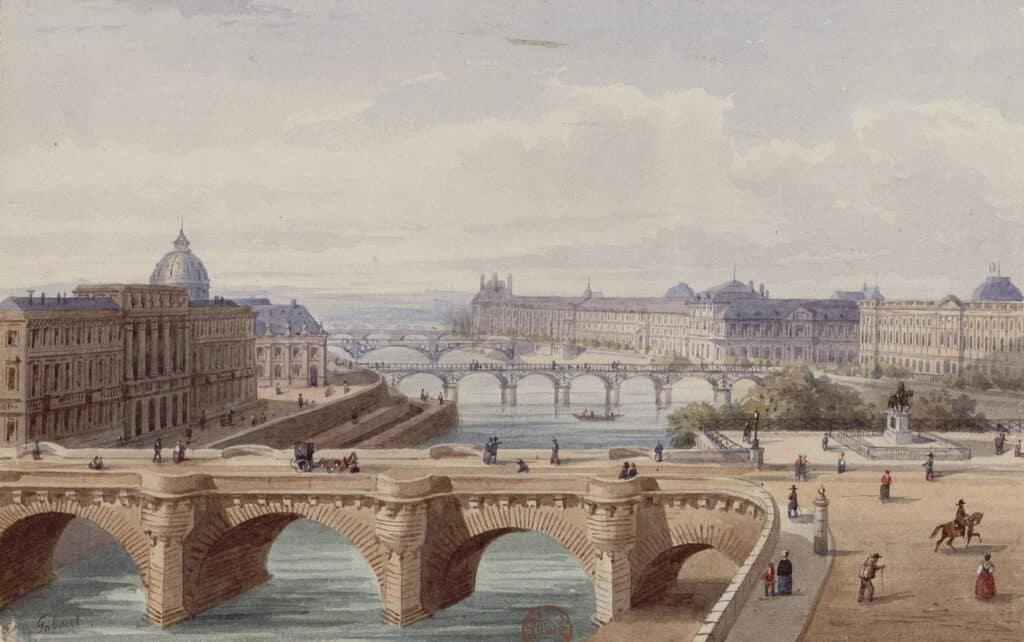
And while the Monnaie de Paris hasn’t moved since, its techniques have nevertheless evolved, with the arrival over the centuries of new tools to perfect production and make coins less copyable. With the arrival of new presses enabling mass production, the provincial workshops gradually closed down over the course of the 19th century, centralizing production in the capital… until 1972.
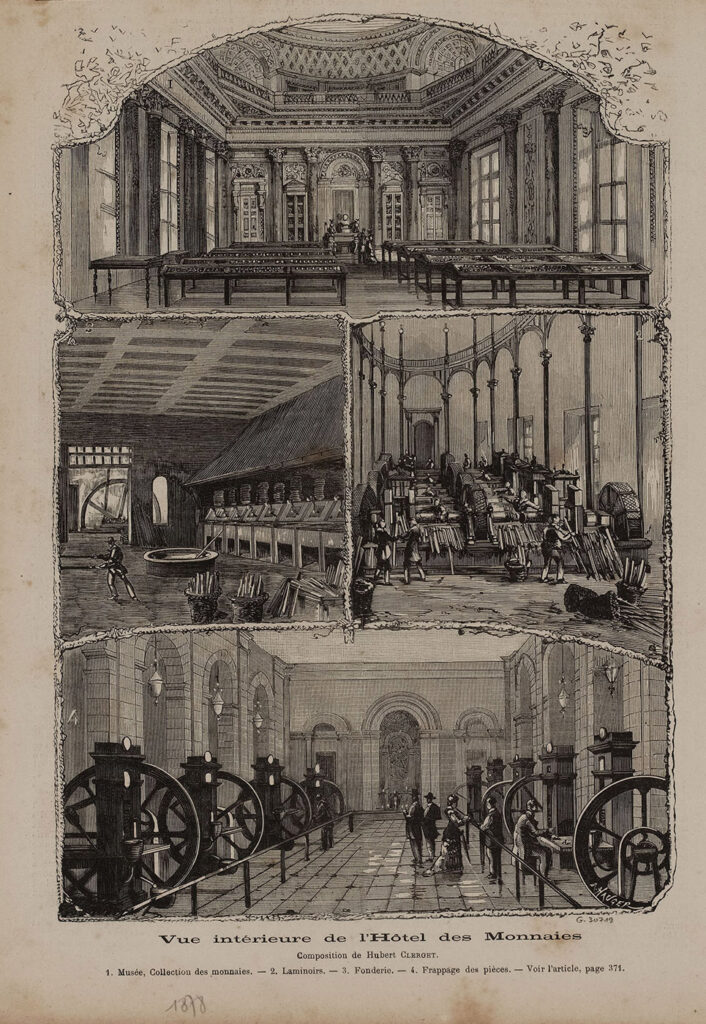
The creation of the Pessac site
In 1972, a new mint was created in Pessac, near Bordeaux, to relieve the pressure on the Paris workshops. Henceforth, each had a clearly defined role: in Paris, the creation of medals and collector coins; in Pessac, the production of everyday coins (those we carry in our wallets every day) as well as international coins, which the Monnaie de Paris manufactures on behalf of other countries.
The Monnaie de Paris professions
La Monnaie de Paris not only guarantees the quality of the coins that leave its factories, it also preserves its know-how to the point of being awarded the “Entreprise du Patrimoine Vivant” (Living Heritage Company) label! It boasts a dozen art professions:
- Engraver
- Foundry
- Metal gilder
- Precious metal jeweler
- Chaser
- Metal enameller
- Polisher
- Coin dealer
- Medal coiner
- Skater
- Patineur à chaud
- Moulder
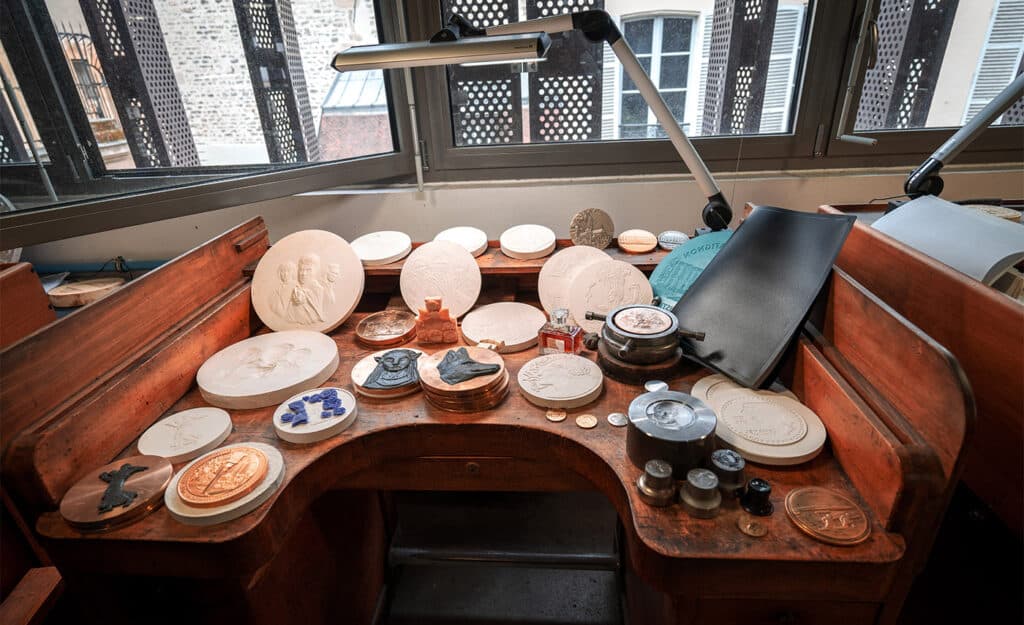
How is a coin made?
It all starts with the engraver, who makes a model of the coin. It’s a multi-stage process, starting with the creation of a model in industrial modeling clay, then in plaster to see how the engraving catches the light.
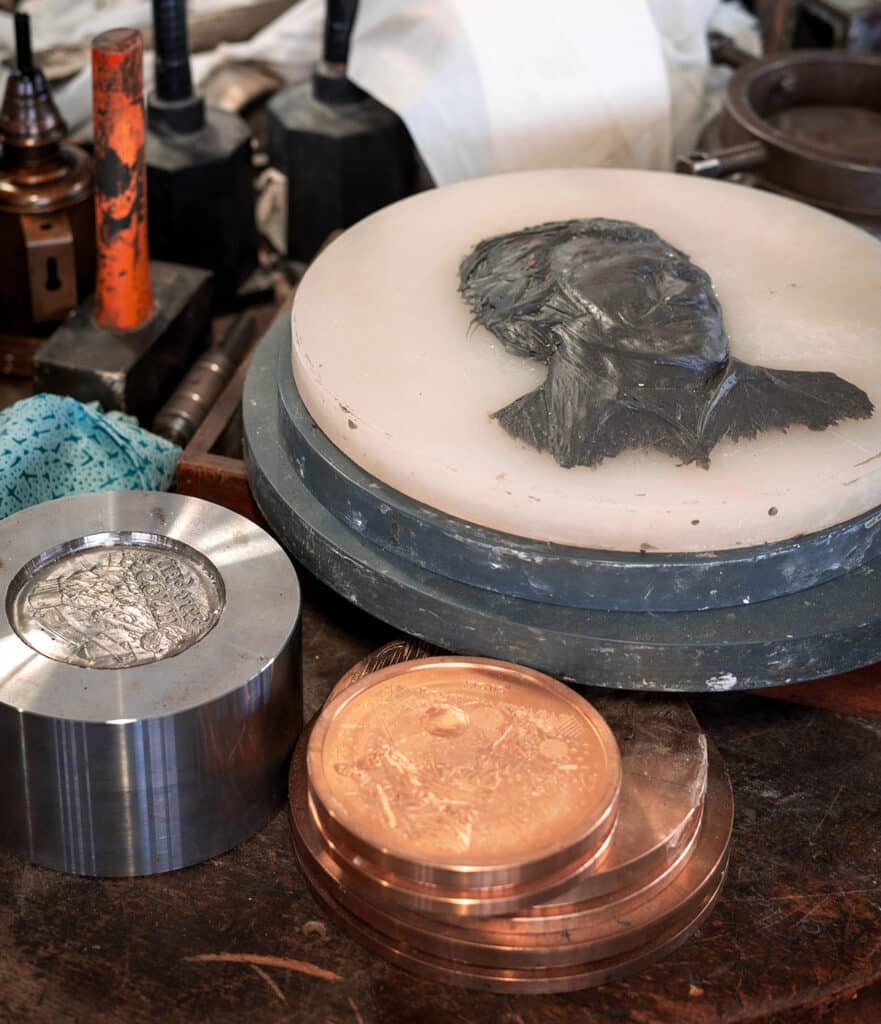
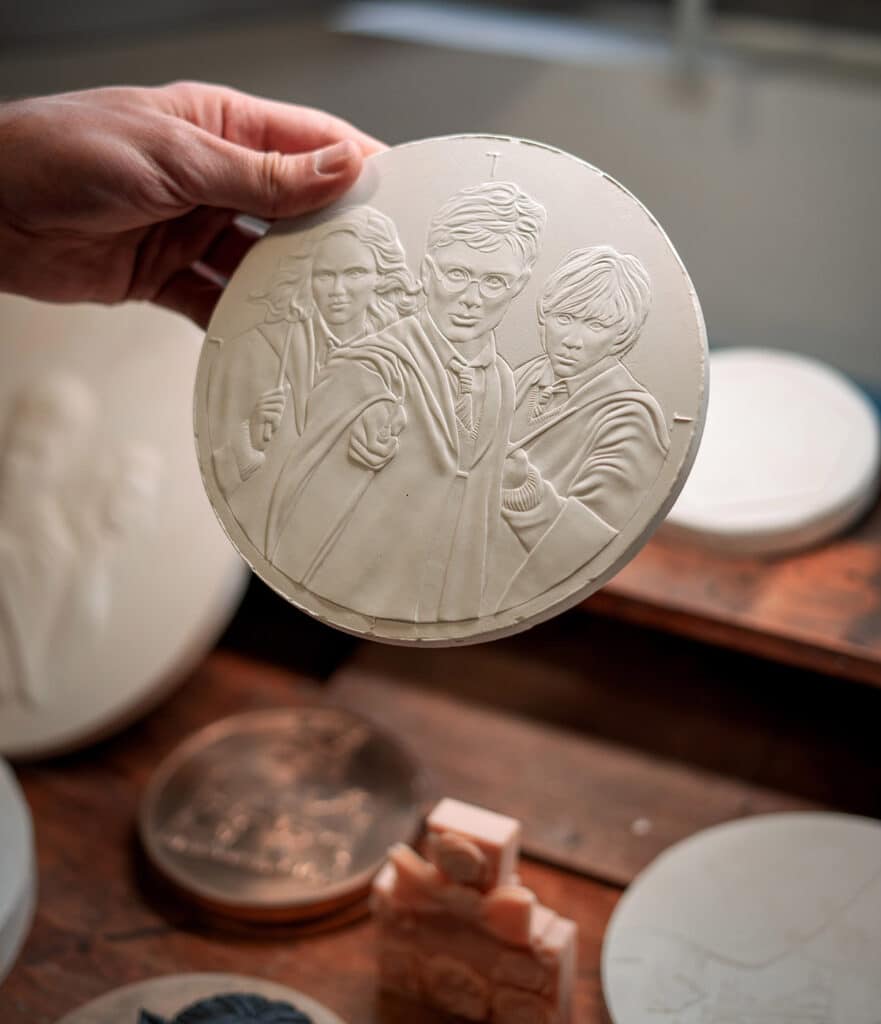
Special tools are then created to strike the pieces. For certain “shaped” pieces (with a different shape from the usual circle), surprising molds are sometimes used!
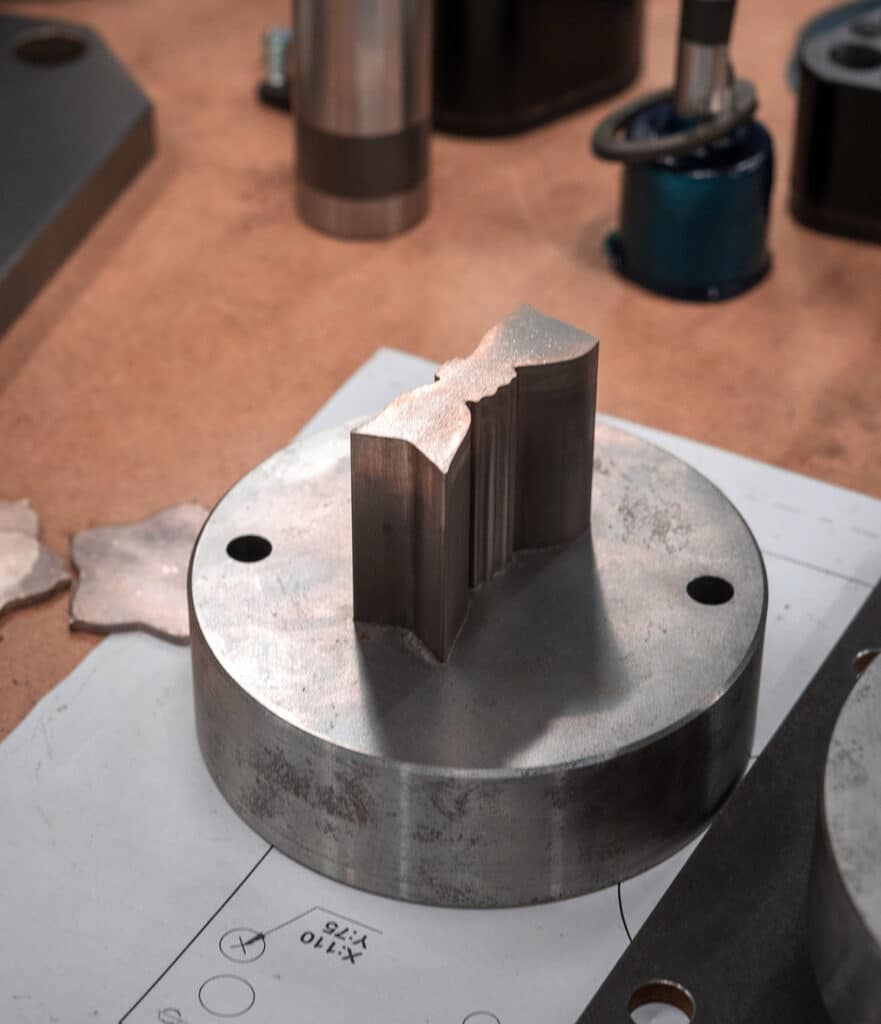

Blanks (flat pieces of metal) are then pressed into the desired shape, to become a part!


Spend a day at La Monnaie de Paris!
Today, the Monnaie de Paris is more than just a factory! There’s also a museum, exhibitions, a café and a wide-ranging cultural program… enough to make a day of it!

A visit to the museum will allow you to discover the history of La Monnaie de Paris in greater detail, while observing the production workshops.
Enjoy your visit 😉
Article produced in partnership with Monnaie de Paris





No Comments
Leave a comment Cancel